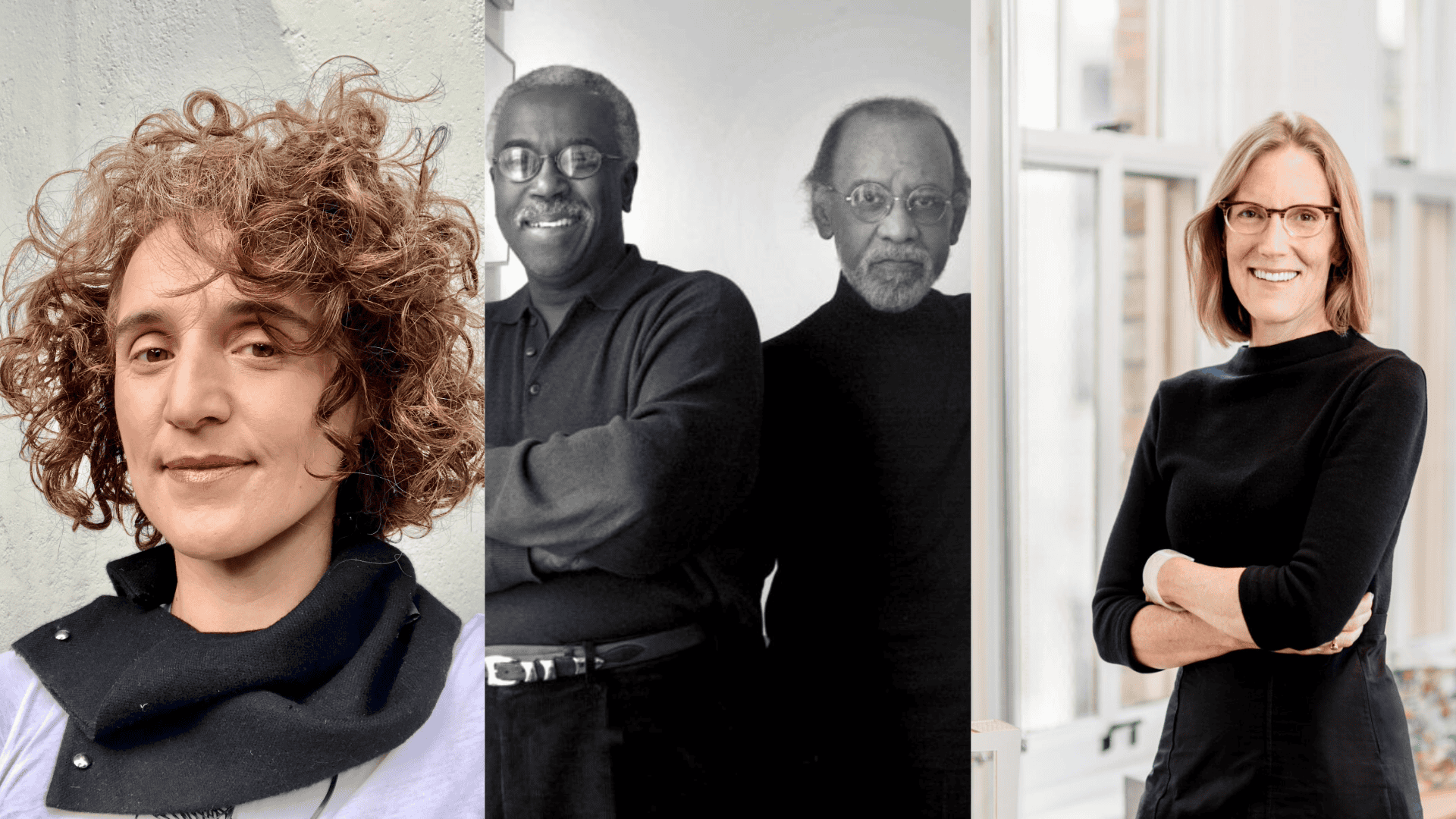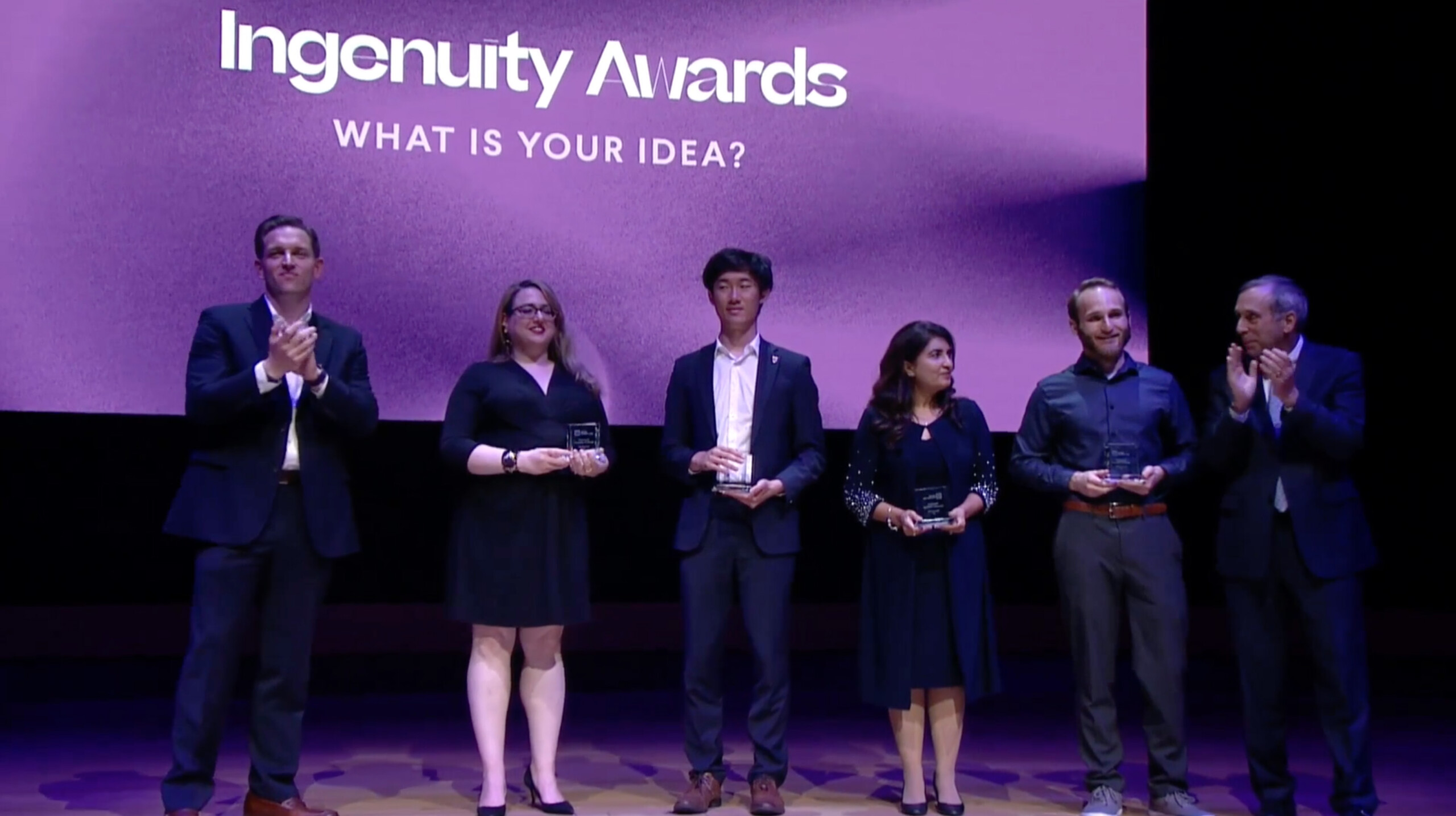Honoring the 2022 GSD Alumni Council Award Winners
The Harvard University Graduate School of Design (GSD) is pleased to announce Chelina Odbert MUP ’07, Donald Stull MArch ’62 (in memoriam) and David Lee MAUD ’71, and Allyson Mendenhall FASLA, AB ’90, MLA ’99 as the 2022 recipients of the Harvard GSD Alumni Award. The award, in its second year, honors outstanding leadership by GSD alumni, underscoring the essential role GSD graduates play in leading change around the world. Founded and led by the GSD Alumni Council, the award recognizes and celebrates the diversity, leadership, range, and impact of GSD alumni within their communities and across their areas of practice.
A celebration of the winners will take place on Friday, Sept. 16, during the GSD Comeback: Alumni & Friends Celebration, which will be Sept. 16-17, 2022. This event is free and open to all.
“Chelina Odbert, Don Stull and David Lee, and Allyson Mendendhall are all outstanding leaders who have not only risen to excellence in their professions but who have played a leading role in changing their communities and the world,” said Brenda Levin MArch ’76, President and Principal of Levin & Associates and co-chair of the Alumni Award jury. “We believe the Alumni Council’s Alumni Award has been a significant contribution to the GSD in bringing focus to the incredible work of our alumni and highlighting the impact that the GSD has had across the globe.”
“This award is about the societal impact that GSD alumni are having on the world through design,” said Kristina Yu MArch ’95, Principal of McCLAIN+YU Architecture and co-chair of the Alumni Award jury. “It’s important that we elevate the exemplary work of our colleagues, and the impact of the work of Chelina, Don and David, and Allyson reverberates strongly in both their hometowns and globally.”
Chelina Odbert MUP ’07: An urban planner by training, Chelina is a Founding Principal and CEO of Kounkuey Design Initiative (KDI), a nonprofit design practice committed to building a more just public realm. While still at the GSD, Chelina and 5 classmates launched the interdisciplinary initiative to expand equity and inclusivity in places that have long been overlooked or actively harmed by traditional design and planning approaches. She has written extensively about KDI’s community-engaged approach to planning and design in the U.S. and abroad, and has held teaching appointments at the GSD and UCLA. Chelina and her work have been recognized by notable institutions including the Van Alen Institute, Ashoka Changemakers, the Aspen Institute, and The Architectural League of New York.
Donald L. Stull MArch ’62 (in memoriam) and M. David Lee MAUD ’71: Donald, an African-American pioneer in architecture, established the award-winning Stull and Lee Inc. (S+L) architecture, design, and planning firm in 1966. Before his death in 2020, Donald was a member of the distinguished College of Fellows of the American Institute of Architects, and recipient of the Boston Society of Architects 1997 Award of Honor. With David at the helm as S+L’s president, the firm has continued its leadership in the design of multi-family housing, educational and health care institutions, office buildings, retail, and manufacturing facilities. David is a fellow in the American Institute of Architects and is a past president of the Boston Society of Architects. He was the recipient of the BSA’s 2000 Award of Honor.
Allyson Mendenhall FASLA, AB ’90, MLA ’99: Serving as the Director of Strategic Initiatives for Sasaki, a landscape architecture, civil engineering, and ecology practice, Allyson is a LEED-certified licensed landscape architect. In addition to her role as past chair of the GSD Alumni Council, Allyson served on the Harvard Alumni Association Board Executive Committee as vice president of university-wide affairs and now serves as the president of the HAA — the first GSD alum to do so . She is also on the boards of the Denver Botanic Gardens and CU Denver College of Architecture and Planning.
Celebrating Recipients of the 2022 President’s Innovation Challenge Award
Recipients of the 2022 President’s Innovation Challenge (PIC) Award were announced in a ceremony in early May. The event brought together an audience of over 2,000 viewers from 64 countries. The PIC program funds Harvard student, alumni, and affiliate innovations through funding from the Bertarelli Foundation . Throughout the seven-month process, teams developed their ventures with robust support from the Harvard Innovation Labs . This year’s winners include Christina Glover (MDes ’19) and Alex Berkowitz (MLA I ’23).
Christina Glover and Kristin Nuckols, a collaborator from the School of Engineering and Applied Studies , created a robot-assisted virtual clinic that restores hand function to stroke survivors. They describe Imago Rehab as “transforming the post-stroke standard of care by bringing evidence-based, high-intensity rehabilitation into the home. Their robot-assisted virtual clinic enables superior hand recovery for the five million stroke survivors in the U.S. with lasting hand impairment. Telerehab eliminates travel burdens to allow greater access to care, while a wearable robotic glove facilitates daily, high-repetition hand rehab from the comfort of home. This digital health solution results in better outcomes and increased independence as chronic stroke survivors are able to use their hand again for the first time since their stroke.”
Alex Berkowitz’s project, “Coastal Protection Solutions ,” is an initiative to mitigate coastal flooding through two systems. The first, “The Wavebreaker,” works as a wave speed bump, decreasing wave velocity to the shore and reducing damage to residential and commercial property. The second is an artificial floating marsh system that builds the coastline up and outward to protect the shoreline from the threat of sea-level rise and storm surge.
Work in Progress: Sijia Zhong’s heritage site in Lima, Peru
Sijia Zhong (MLA I AP ’23) describes her final project for the option studio “Transversal Grounds: Engaging Infrastructure, Landscape and Heritage for Lima’s New Urban Commons” led by Sandra Barclay and Jean Pierre Crousse, spring 2022.
Work in Progress: Rayshad Dorsey’s Domestic Grounds
Rayshad Dorsey (MArch I ’23) describes his final project for the option studio “Tall, Lean, In-between” led by Christopher C.M. Lee, spring 2022.
Alfredo Thiermann contributes to the Chilean Pavilion at the Venice Biennale
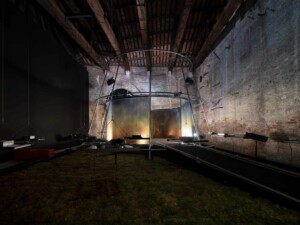
Turba Tol Hol-Hol Tol , a collective project on display as part of the 59th Venice Biennale , features an interdisciplinary team of Chilean creatives, including Alfredo Thiermann, design critic in Architecture at the Graduate School of Design (GSD). The pavilion is a multisensory sound and video installation that exhibits the cultural, political, and environmental relevance of the peatlands in Patagonia and their relationship with their original inhabitants, the Selk’nam people. Turba Tol Hol-Hol aims to provide an experimental path toward conserving the peatlands through research, education, and collaborations with the Wildlife Conservation Society–Chile, Karukinka Park in Tierra del Fuego, and the Selk’nam Hach Saye Cultural Foundation.
The Chilean Pavilion is curated by Camila Marambio, an independent US-Chilean curator who founded Turba Tol Hol-Hol Tol as a research project and collective “emerging out of eco-relational philosophy and post-humanist cultural theory, particularly related to the ethics of living and dying in a time of ecological crisis.” “Hol-Hol Tol” means the “heart of peatlands” in the language of the Selk’nam people, who are Indigenous to Tierra del Fuego, Patagonia. The peat fields in this region are part of a delicate natural environment and are drying up under the threat of climate change, mining, peat moss harvesting, and ecological degradation. Once drained and destroyed, peatlands go from being carbon sinks to being sources of carbon emissions, releasing enormous amounts of greenhouse gases into the atmosphere. The Selk’nam believe that their first ancestors became mountains, rivers, trees, and animals, and every element of nature is sacred. They insist that peatlands are a living body and a reservoir of memories, “We are claiming a society of mutual care: peatlands and bog people are indivisible.” Members of the Selk’nam people are also involved in the project.
“Our project is invested in a tour de force for visibility, visibility of a landscape and ecosystem that is in danger, and visibility of a people that has been violently deprived of their most fundamental condition of existence: namely, the fact of being recognized as such, as a living and existing culture,” says Thiermann. “Invested with such aim for visibility, Venice has a clear relevance for this project, because it can bring those issues to the fore, and in so doing it can influence, we hope quite directly, the political ethos of both entities that we are concerned with: the Selk’nam people and the peatlands, not only from Chile but across the globe.”
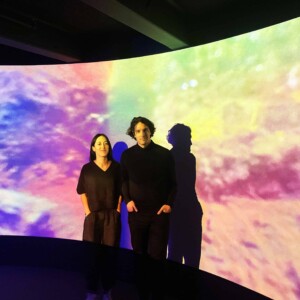
Dominga Sotomayor, visiting lecturer at Harvard’s Department of Art, Film, and Visual Studies, is also part of the Turba Tol Hol-Hol collective and contributed to the installation. Additional members of the project include Ariel Bustamante, an artist whose work focuses on transhuman conversations and Andean listening practices, and Carla Macchiavello, an art historian and educator whose research focuses on contemporary Latin American artistic practices linked to ecology and social change. The artists are joined by ecologist Bárbara Saavedra, Selk’nam writer Hema’ny Molina, and cultural producer Juan Pablo Vergara, among others.
Thiermann is an architect and founding partner of Thiermann Cruz. Through his design practice and theoretical research, he explores the intersection between architecture and different media, from sound installations and film scenography to single-family houses, public buildings, and large-scale infrastructures. He has taught and lectured at Pontificia Universidad Católica de Chile and other institutions. Thiermann’s written and built work has been published in Revista ARQ, TRACE magazine, Zeppelin, Potlatch, Real Review, Thresholds, Archithese, GTA Papers, and BauNetz, and has been exhibited at the Museum of Modern Art in New York, Museo Nacional de Bellas Artes in Santiago, the Istanbul Design Biennial, Museo MAC Quinta Normal, and Centro Cultural Estación Mapocho, among other institutions.
Work in Progress: Justin Hailey’s Tar Creek Superfund Site
Justin Hailey (MLA II ’23) describes his final project for the option studio “OTTAWA COUNTY REMADE: Toxic Transformations in the Tri-State Lead and Zinc District, Oklahoma” led by Niall Kirkwood, spring 2022.
Lara Avram and Daniel Haidermota awarded 2022 KPF Travel Fellowship
Each year, the Kohn Pedersen Fox Foundation (KPF) sponsors a series of fellowships to support emerging designers and advance international research. KPF recently announced Lara Avram (MArch AP ’23) and Daniel Haidermota (MArch ’23) received the 2022 Kohn Pedersen Fox Traveling Fellowship , established to broaden the education of a design student in their last year of school through a summer of travel and exploration. The Traveling Fellowship is given to students from one of the 27 design schools with which KPF has partnered to fund summer research on “far-reaching topics that push the boundaries of critical thinking and architectural design.”
The jury was comprised of chair Julia Backhaus, Assistant Professor of Architecture and Director of Enterprise at the Bartlett School of Architecture in London; Mike Tonkin, Director and Founder of Tonkin Liu, Architect, Landscape Designer and Teaching Fellow at Bath University and External Examiner at the Bartlett; Anupama Kundoo, Director, Anupama Kundoo Architects; Brian Girard, Design Principal at KPF, and James von Klemperer, President of KPF.
While the Fellowship is administered and awarded by KPF, the foundation requires that participating institutions nominate their students. There is an internal departmental selection process which occurs prior to final submission of materials to KPF and information about this process is communicated to students each year by the GSD Architecture Department. Learn more about the Fellowship through the Fellowships, Prizes, & Travel Programs webpage.
Harvard Design Press announces fall 2022 titles
Following the launch of Harvard Design Press last spring, the Press is pleased to announce the release of three titles this fall: John Andrews: Architect of Uncommon Sense, Frida Escobedo: Split Subject, and Empty Plinths: Monuments, Memorials, and Public Sculpture in Mexico.
Documenting John Andrews’ path from Australia to the United States and Canada and back again, John Andrews: Architect of Uncommon Sense by Paul Walker, examines his most important buildings and reveals how the internationalization of architecture during this period was an unexpectedly dispersed geographical phenomenon, following more complex flows and localized progressions than earlier modernist ideas that travelled from center to periphery, metropole to outpost. Andrews negotiated the advent of postmodernism not by ignoring it, but by cultivating approaches that this new era foregrounded—identity, history, place—within the formal vocabularies of modernism. As Andrews assumed wider public roles and took appointments that allowed him to shape architectural education, he influenced design culture beyond his own personal portfolio. This book presents Andrews’ legacy traversing local and international scenes and exemplifying late-modern developments of architecture while offering both generational continuities and discontinuities with what came after. John Andrews: Architect of Uncommon Sense features essays from Paul Walker, Mary Lou Lobsinger, Peter Scriver and Antony Moulis, Philip Goad, and Paolo Scrivano, along with nearly 100 new photographs of existing buildings designed by Andrews in North America and Australia from visual artist Noritaka Minami.
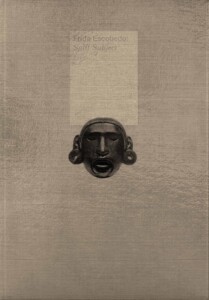
Split Subject, an early project by architect Frida Escobedo, deconstructs a fraught allegory of national identity and architectural modernism in Mexico. Unpacking this project and tracing its enduring influence throughout Escobedo’s career, Frida Escobedo: Split Subject reveals a multi-scalar and multi-medium practice whose creative output encompasses permanent buildings, temporary installations, public sculpture, art objects, publications, and exhibitions, and bares at its center a sensitivity to time and weathering, material and pattern, and memory. It includes essays by Julieta Gonzalez, Alejandro Hernández, Erika Naginski, Doris Sommer and José Falconi, and Irene Sunwoo, and a foreword by Wonne Ickx.
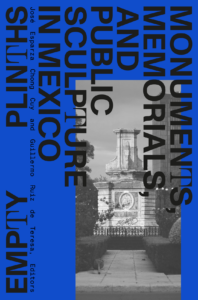
Empty Plinths: Monuments, Memorials, and Public Sculpture in Mexico responds to the unfolding political debate around one of the most contentious public monuments in North America, Mexico City’s monument of Christopher Columbus on Avenida Paseo de la Reforma. In convening a diverse collective of voices around the question of the monument’s future, editors José Esparza Chong Cuy and Guillermo Ruiz de Teresa probe the unstable narratives behind a selection of monuments, memorials, and public sculptures in Mexico City, and propose a new charter that informs future public art commissions in Mexico and beyond. At a moment when many such structures have become highly visible sites of protest throughout the world, this new compilation of essays, interviews, artistic contributions, and public policy proposals reveals and reframes the histories embedded within contested public spaces in Mexico.
A book-publishing imprint based at Harvard GSD and distributed in collaboration with Harvard University Press, Harvard Design Press challenges, broadens, and advances the design disciplines and advocates for the value and power of design in making a more resilient, just, and beautiful world. In pursuit of new, original ideas on the research and practice of architecture, landscape architecture, urban planning, and urban design, the Press seeks book proposals from researchers, practitioners, theorists, historians, and critics, among others. More information about submitting a proposal can be found on the Harvard Design Press’s webpage.
Harvard Design Press is organized and edited by Harvard GSD’s Ken Stewart and Marielle Suba, and guided by an Editorial Board composed of Harvard GSD and Harvard University faculty. Alongside Dean Sarah Whiting, the Harvard Design Press Editorial Board includes Harvard GSD’s Martin Bechthold, Anita Berrizbeitia, Eve Blau, Ed Eigen, K. Michael Hays, Niall Kirkwood, Mark Lee, John May, Rahul Mehrotra, Erika Naginski, Jacob Reidel, and Sara Zewde, as well as Harvard University’s Lizabeth Cohen, Sarah Lewis, and Patricio del Real.
To learn more about Harvard Design Press and explore submission guidelines, please visit the Harvard Design Press’s webpage. To stay up-to-date on new releases and general Harvard GSD news, please visit Harvard GSD’s homepage and subscribe to its Design News updates.
Harvard GSD announces three new faculty appointments
The Harvard Graduate School of Design is happy to announce the appointments of Jonathan Grinham as Assistant Professor of Architecture, Ana Maria León Crespo as Associate Professor of Architecture, and Hannah Teicher as Assistant Professor of Urban Planning, effective July 1, 2022.
Jonathan Grinham has served as Lecturer in Architecture at the GSD and a Senior Research Associate with the Harvard Center for Green Buildings and Cities since 2018. He holds degrees in architecture and building science from Virginia Tech and a D.Des. degree from the GSD. Jonathan’s research brings an intensely interdisciplinary approach to climate change and the built environment, connecting material science with building science and design to examine questions on materiality, thermal health, and lifecycle carbon emissions. These questions have sparked the development of novel technologies, publications, and patents that address low-carbon building solutions through material innovation. Jonathan’s research has gained significant recognition through numerous funding awards, including the Harvard Climate Change Solutions Fund, the prestigious Department of Energy Advanced Building and Construction program, and the Wyss Institute for Biologically Inspired Engineering’s Validation Project program. Jonathan is passionate about translating his research into design-based learning. His teaching on the science of materials in the face of climate change continues to push the boundaries of building materials.
Ana María León Crespo joins us from the University of Michigan, where she was Assistant Professor in the History of Art and Romance Languages and Literatures departments, and in the School of Architecture. Ana María’s work studies how spatial practices and transnational networks of power and resistance shape the modernity and coloniality of the Americas. Ana María holds a diploma in architecture from UCSG Ecuador, an M.Arch. from Georgia Tech, an M.Des. with distinction from the GSD, and a Ph.D. in the History, Theory, and Criticism of Architecture from MIT. She serves on the boards of the Global Architectural History Teaching Collaborative (GAHTC) and the Society of Architectural Historians and is co-founder of several collectives laboring to broaden the reach of architectural history, including Nuestro Norte es el Sur (Our North in the South), a group of architectural historians working from and about Latin America, and the Settler Colonial City Project, a research collective focused on the collaborative production of knowledge about cities on Turtle Island/Abya Yala/The Americas as spaces of ongoing settler colonialism, Indigenous survivance, and struggles for decolonization.
Hannah Teicher, currently a Researcher-in-Residence at the Pacific Institute for Climate Solutions, University of Victoria in Canada, joins the Department of Urban Planning and Design as an expert in mitigation and adaptation to climate change. Her research focuses on novel collaborations that advance adaptation, embodied carbon at the urban scale, and climate migration with a focus on receiving communities. For the Climigration Network, dedicated to closing the gap between communities and practitioners on assisted relocation, Hannah serves on the Network Council and Co-Chairs the Narrative Building Work Group. Hannah has a Ph.D. in urban and regional planning from MIT, an M.Arch. from the University of British Columbia, and a B.A. in Sociology and Anthropology from Swarthmore College. She received the Martin Fellowship for Sustainability in support of her research on urban/military collaborations for adaptation. Before beginning her doctoral studies in 2014, Teicher practiced architecture at Shape Architecture in Vancouver, served as a researcher for the Transportation Infrastructure and Public Space Lab, University of British Columbia, and taught at Emily Carr University of Art and Design. In 2014, a green infill project she worked on with Shape Architecture won the Vancouver Urban Design Award for Outstanding Sustainable Design from the City ofVancouver, and in 2013 an EV charging project she collaborated on with the TIPS Lab received the American Institute of Graphics Arts (Re)design Award.
Designing Sustainable Solutions for a Better Built Environment: A Meeting of Ideas at Harvard’s Center for Green Buildings and Cities
Commemorating Earth Day, the Harvard Center for Green Buildings and Cities (CGBC) hosted its first in-person event since the beginning of the pandemic, featuring six short presentations by GSD faculty whose research relates to designing sustainable solutions for a better built environment. The topics of the presentations ranged from algae-based biomaterials to urban infrastructure, and were followed by five-minute Q&A sessions. All work was supported by CGBC faculty grant awards.
The timeliness of addressing these environmental challenges was highlighted by James Stock , Harvard’s new vice-provost for climate and sustainability, who stressed the importance of interdisciplinary communication in his keynote address, pointing out the scale of the problem in monetary terms: “Our energy system, from what we are doing, is imposing $600 billion in damages, every year, on future generations.” He also warned of the dangers of merely “spending money to feel good without actually solving the problem.”
The six speakers all presented their research aimed at improving the built environment with one clear vision in mind: “to transform the building industry by developing new processes, systems, and products that lead to more sustainable and high-performance buildings and cities,” according to the opening address from Ali Malkawi, founding director of CGBC , director of the Doctor of Design Studies Program, and professor of architectural technology.
Algae-Based Biomaterials for the Built Environment
Martin Bechthold, Kumagai Professor of Architectural Technology, presented a unique solution to the challenge of reducing the embodied carbon footprint of the construction industry. By developing new algae-based materials that absorb CO2 during photosynthesis, Bechthold proposes that the built environment could be transformed into a carbon storage device on a large scale, sequestering carbon in the material itself and holding it for the lifetime of the building.
Working in collaboration with a team of material scientists at Caltech led by Professor Chiara Daraio , the GSD’s researchers have been focused on the practical challenges and implications of the algae-based material being developed at Caltech: How can we fabricate functional building components from it, while navigating its active properties? What opportunities and efficiencies might it offer us? Bechthold noted that a growing network of colleagues and partners has been fundamental to their research, thanks to the CGBC.
Reshaping Urban Environments through Infrastructure Design Protocols (Phase I + II)
Rosalea Monacella, design critic in landscape architecture, offered timely insight into the increasing demands faced by the electrical power grid—and how design can provide solutions while simultaneously addressing the global implications of climate change. As urban communities grow and put pressure on existing infrastructures, a radical reevaluation is required in order to develop adaptable, modulating structures for the future. This means understanding and anticipating not only environmental concerns but also the technological, economic, logistic, and social challenges for the cities of tomorrow.
Tellingly, she noted how sorely out of date America’s national grid infrastructure is: “The majority of the transition and distribution lines were constructed in the 1950s and ’60s, with a life expectancy of 50 years.”
The team’s design research was intended to develop deployable prototypes that work on a regional scale, giving individual cities control, responsibility, and accountability for their own power and water consumption, drawing resources from their local environs.
Energies of the Night: Nocturnal Public Space and Energy Policy in the Arabian Peninsula
Considering the geo-social implications of design in the Arabian Peninsula, Associate Professor of Landscape Architecture Gareth Doherty gave a presentation centered around the use of public spaces after-hours. Given that communities in this region tend to socialize when darkness falls and the temperature drops, there is a need to come up with less light-polluting solutions.
Drawing on field research conducted through his “Design Anthropology” seminar, Doherty explored the possibilities of more efficient design for darkness, plus strategies to make better use of cooler temperatures and remediating lighting needs. “Navigating the dark spaces of the night calls for the activation of our senses, beyond the primacy of the visual,” he says.
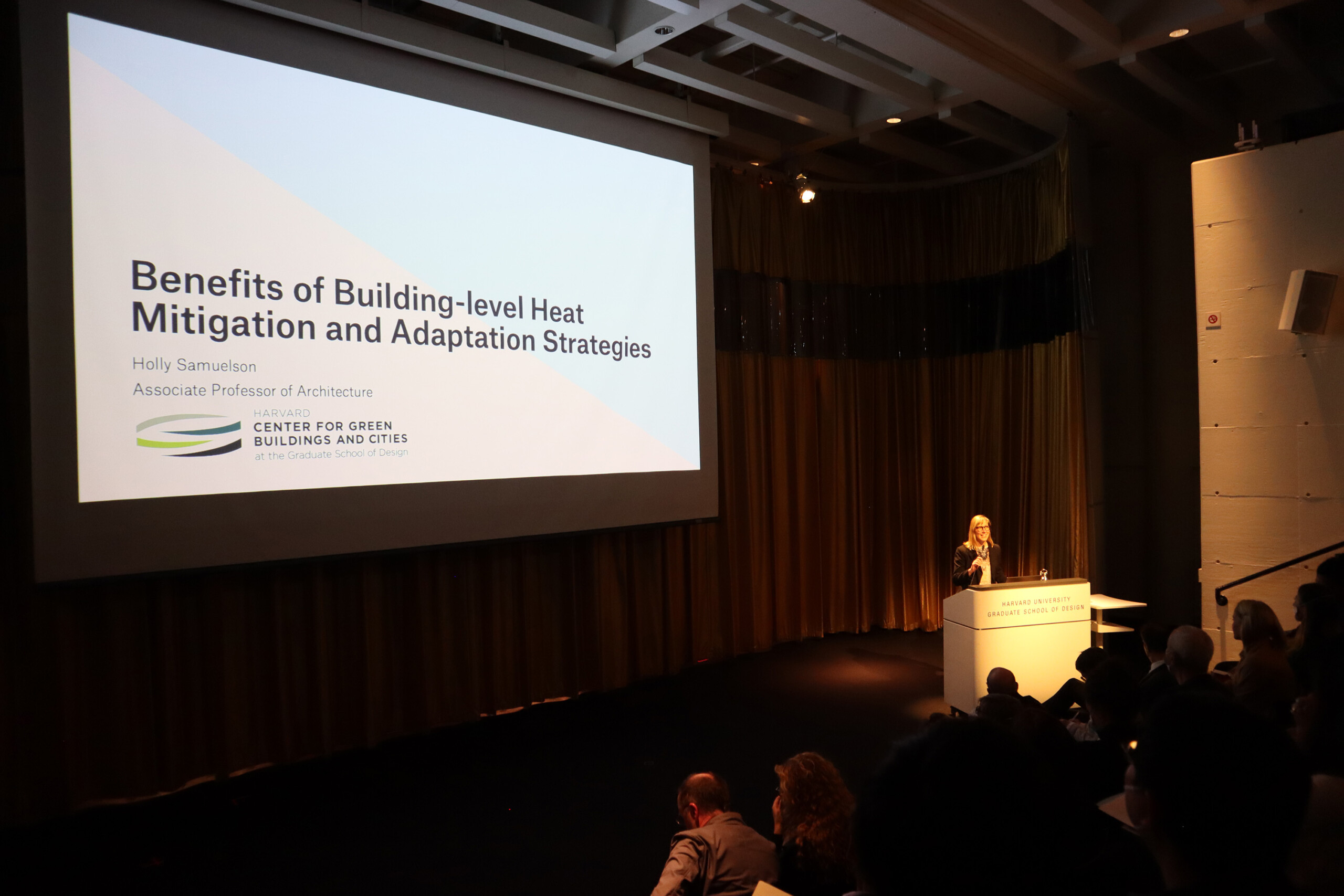
Benefits of Building-Level Heat Mitigation and Adaptation Strategies
It is a self-perpetuating problem that the issue of urban heat is exacerbated by building design. Consequently, as Associate Professor of Architecture Holly Samuelson explained, the onus is on architects, urban planners, and designers to come up with strategies for heat mitigation—noting that, “In 50 years, there could be billions of people that are susceptible to temperatures and climates that are outside of the conditions that have served humanity well for the past 6,000 years.”
As Samuelson pointed out, this can also have implications for the health of the urban community thanks to factors such as heat exposure and greenhouse gas emissions. In addressing such a multifaceted problem, a joined-up approach is required—one that considers the impact of building design strategies at different scales, while demonstrating a reproducible and scalable framework that can inform future work.
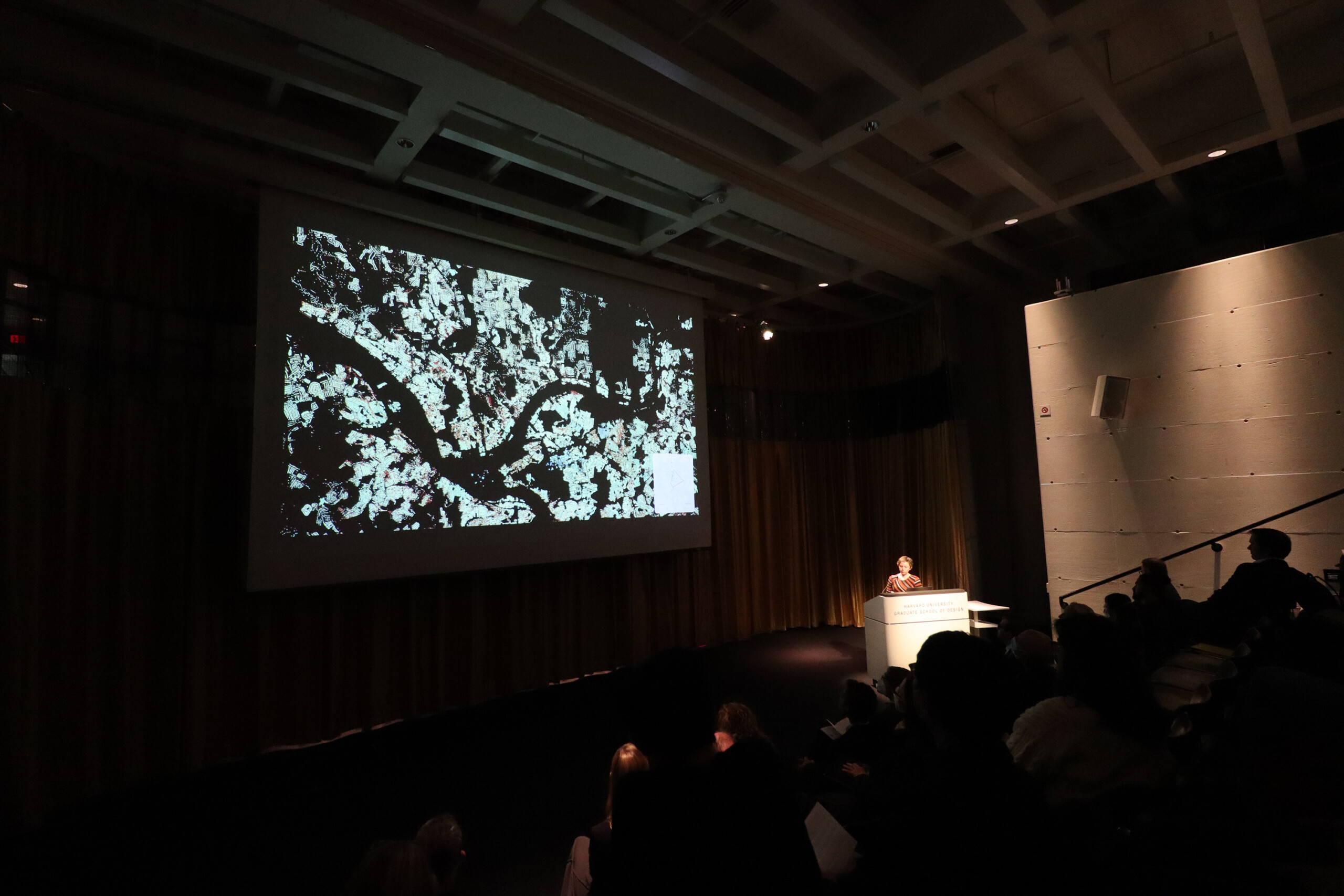
Evaluating Location-Based Sustainability at the Site Level
Carole Turley Voulgaris, assistant professor of urban planning, highlighted the need for greater consistency in the methodology for measuring vehicle miles traveled (VMT) at site level for existing and proposed developments. She explained that it’s “one way to measure the sustainability of a particular location.” Research was undertaken into existing office sites in both the San Francisco Bay Area and the Wasatch Front Region of Utah.
With VMT estimations varying considerably, it was noted that discrepancies are often magnified as the figure is multiplied to cover wider areas. The team suggested that further research is required to prioritize the “four Cs”: consistency, cost-effectiveness, closeness, and conservatism.

The Oasis Effect: Agricultural Practices in Arid Environments
With a backdrop of climate change and aggravated environmental degradation, the challenges of agricultural practices in extreme arid environments are only going to become more severe. With this in mind, Pablo Pérez-Ramos, assistant professor of landscape architecture, explained how his team’s research had produced a typological matrix of oases, allowing for a methodological and comparative study of them. It’s a resource that will become increasingly relevant as the effects of global warming and the resultant shifts in landscapes intensifies.
Pérez-Ramos announced that his team will soon be able to conduct field research that includes the use of drone technology to measure the thermal shock induced by the presence of vegetation and water.
Ali Malkawi concluded the meeting by saying, “It’s been wonderful to see this impactful research grow as a result of the CGBC seed funding—and continue to gain traction.” He also announced the issuing of at least five new awards for the coming year.
